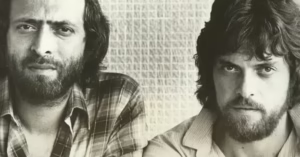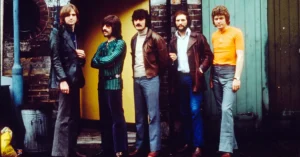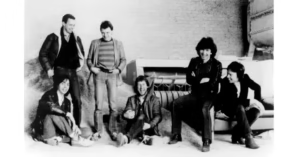The Who: Mod Icons and Architects of Rock Opera
Formation and Early Days
The Who formed in London in 1964, rising from the British Mod scene as a fierce, rebellious, and wildly energetic quartet. The original and classic lineup consisted of:
- Roger Daltrey – Lead vocals
- Pete Townshend – Guitar, backing vocals, principal songwriter
- John Entwistle – Bass, backing vocals
- Keith Moon – Drums
Their early sound was a high-octane mix of R&B, British beat music, and power chords, and they quickly distinguished themselves through explosive live shows, instrument destruction, and a fierce intelligence beneath the chaos.
Musical Style and Innovation
The Who are known for fusing raw rock energy with artistic ambition, laying the groundwork for both punk rock and progressive rock. Their music evolved from short, aggressive singles into sprawling conceptual works — a journey that included:
- Powerful guitar riffs and feedback experimentation
- Complex rock operas with narrative depth
- Virtuosic, thunderous rhythm section
- Themes of alienation, rebellion, and generational identity
Townshend’s songwriting stood out for its theatrical flair, deep introspection, and ability to connect with youth culture.
Breakthrough Albums and Highlights
My Generation (1965)
Their debut was a declaration of war on complacency. The title track — “Hope I die before I get old” — became a youth anthem, while tracks like “The Kids Are Alright” captured the band’s early Mod spirit.
The Who Sell Out (1967)
A satirical concept album designed as a mock pirate radio broadcast, complete with fake jingles. The song “I Can See for Miles” was a psychedelic high point.
Tommy (1969)
The band’s first rock opera, telling the story of a deaf, dumb, and blind boy who becomes a messianic figure. The album was groundbreaking and elevated rock music into the realm of serious art.
Live at Leeds (1970)
One of the most powerful live albums ever recorded, showcasing The Who’s raw, unfiltered energy and improvisational prowess.
Who’s Next (1971)
Arguably their greatest album. Originally conceived as part of a sci-fi rock opera (Lifehouse), the project evolved into a studio masterpiece featuring synthesizers, epic anthems, and deeply personal lyrics. Tracks like “Baba O’Riley”, “Behind Blue Eyes”, and “Won’t Get Fooled Again” are rock classics.
Quadrophenia (1973)
Another rock opera, this time centered on a young Mod struggling with identity. A dense, cinematic album with songs like “The Real Me”, “Love Reign O’er Me”, and “5:15”.
Tragedy and Transformation
In 1978, drummer Keith Moon died of a drug overdose. His chaotic brilliance was irreplaceable, but the band continued with Kenney Jones (ex-Faces) and released Face Dances (1981) and It’s Hard (1982), before going on hiatus.
John Entwistle died in 2002, leaving Daltrey and Townshend as the last surviving classic members. They’ve continued touring under The Who name, backed by excellent session players, and released Endless Wire in 2006 and WHO in 2019.
Legacy and Influence
The Who are considered one of the greatest and most influential rock bands of all time, with an unmatched combination of:
- Stage power and aggression
- Conceptual innovation and depth
- Iconic rhythm section (Entwistle and Moon remain legendary)
Their influence spans genres — from punk and metal to art rock and Britpop — and bands like Pearl Jam, Green Day, Radiohead, and The Jam have cited them as inspirations.
Interesting Facts
- They pioneered the use of synthesizers in rock, especially on Who’s Next.
- Pete Townshend coined the term “rock opera.”
- Their performance at Woodstock (1969) and Live Aid (1985) are considered historic.
- They were inducted into the Rock and Roll Hall of Fame in 1990.
- The logo with a target and arrow (Mod symbol) is one of the most recognizable in rock.





